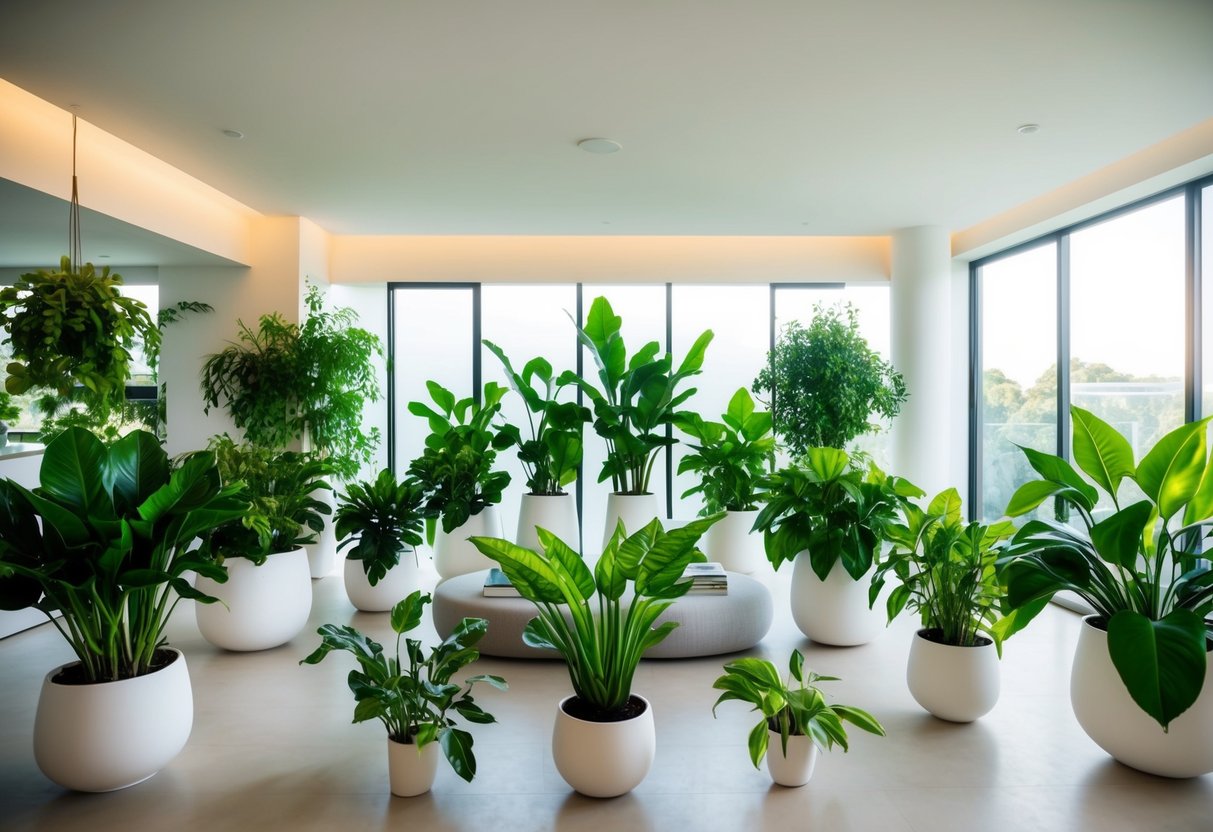Indoor Plants that Double as Air Purifiers for a Healthier Home
Top Air-Purifying Indoor Plants
Indoor plants like the Peace Lily and Snake Plant are highly effective at removing harmful airborne toxins. These plants improve indoor air quality and add a touch of greenery to home interiors.
The Peace Lily
The Peace Lily, known for its striking white blooms, is a powerful air purifier. It efficiently removes toxins like ammonia and benzene from the air. This plant thrives in low-light conditions, making it an excellent choice for offices or shaded rooms. It requires minimal maintenance, needing only weekly watering to thrive. The Peace Lily’s ability to filter the air has been well-documented, making it a popular choice for improving indoor air quality. Its lush, dark leaves also contribute to its aesthetic appeal, making any indoor space more inviting.
Golden Pothos
Golden Pothos, also known as Devil’s Ivy, is highly favored for its resilience and air-purifying properties. This vine-like plant excels in eliminating pollutants such as formaldehyde and xylene. It adapts well to various light conditions but prefers indirect light. Golden Pothos is known for its trailing vines, which can be a stunning addition to hanging baskets or shelves. It is one of the easiest plants to care for, requiring minimal watering. Due to its robust nature and ability to cleanse the air, it remains a top pick for homes and offices.
Bamboo Palm
The Bamboo Palm is revered for adding a tropical feel while cleaning the air of toxins like carbon monoxide and formaldehyde. Its lush foliage can thrive in both low and indirect light, making it versatile for different indoor environments. The plant is also known for producing small flowers and occasional berries, adding to its decorative appeal. Its ability to increase humidity levels can be beneficial in dry indoor climates. The Bamboo Palm’s significant contribution to indoor air purification makes it a worthwhile addition to any space seeking cleaner air.
English Ivy
English Ivy is a popular choice for its ability to reduce airborne mold and other contaminants effectively. It is particularly beneficial for people with allergies or asthma, as it helps in reducing mold spores in the air. English Ivy’s trailing vines can be creatively trained to cover walls or hang from shelves, adding visual interest to interior spaces. The plant prefers cooler environments with some filtered sunlight and requires regular watering during the growing season. Its easy-to-maintain nature combined with air-purifying capabilities makes English Ivy a practical choice for enhancing indoor air quality.
Snake Plant
The Snake Plant, or Mother-in-Law’s Tongue, is renowned for its hardiness and air-cleaning efficiency. This striking plant is adept at removing toxins such as formaldehyde and nitrogen oxides from indoor environments. It can thrive in low-light conditions and withstand irregular watering, making it ideal for beginners or busy individuals. The unique upright leaves add a modern touch to any decor, while its low maintenance needs make it a convenient option. The Snake Plant stands out for improving air quality during the night by releasing oxygen and removing toxins, setting it apart from many other houseplants.
Optimizing Plant Placement for Air Purification

Positioning air-purifying plants in specific areas is crucial for improving indoor air quality. Strategic placement ensures maximum efficiency in air purification while also enhancing the aesthetic appeal of your home environment.
Best Locations for Air-Purifying Plants
Air-purifying plants thrive in areas with adequate natural light and stable humidity. The living room, being a common space, benefits from strategically placed greenery, which can remove toxins typically emitted by furnishings and electronics. Bedrooms are also ideal for plants like peace lilies or snake plants, which can contribute to better air quality and promote restful sleep by releasing oxygen at night.
Bathrooms, typically humid, suit plants such as the Boston fern that thrive in moisture-rich environments and help reduce mold spores. Kitchens benefit from herbs like basil or mint, which not only aid air purification but also enhance cooking with fresh flavors. Placing plants near windows ensures they receive necessary sunlight while avoiding direct exposure to harsh sunlight, which could damage them.



